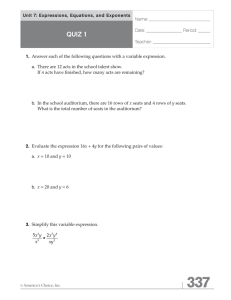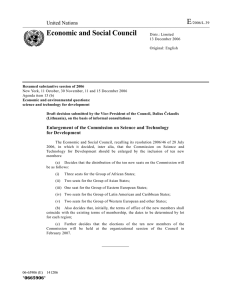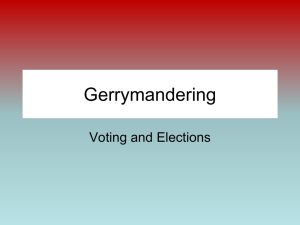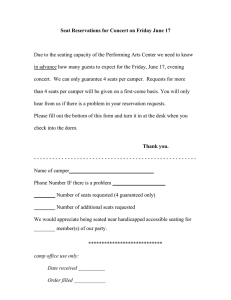Homework 6
advertisement
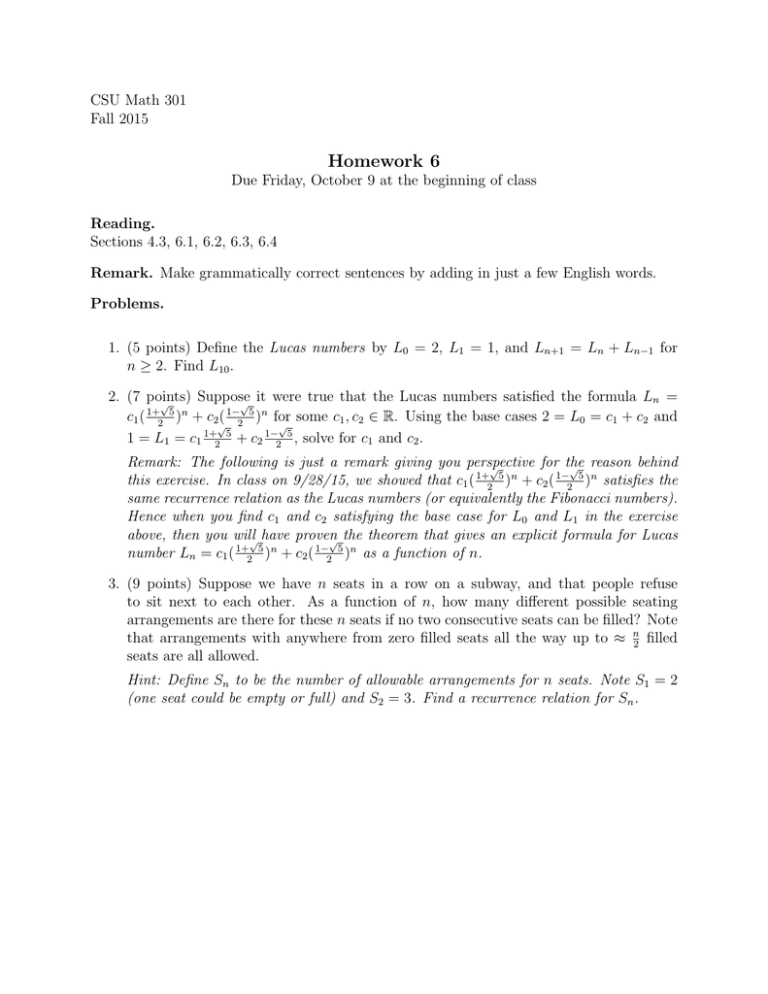
CSU Math 301 Fall 2015 Homework 6 Due Friday, October 9 at the beginning of class Reading. Sections 4.3, 6.1, 6.2, 6.3, 6.4 Remark. Make grammatically correct sentences by adding in just a few English words. Problems. 1. (5 points) Define the Lucas numbers by L0 = 2, L1 = 1, and Ln+1 = Ln + Ln−1 for n ≥ 2. Find L10 . 2. (7 points) Suppose it were true that the Lucas numbers satisfied the formula Ln = √ √ 1− 5 n 1+ 5 n some c1 , c2 ∈ R. Using the base cases 2 = L0 = c1 + c2 and c1 ( 2 ) + c2√( 2 ) for √ 1 = L1 = c1 1+2 5 + c2 1−2 5 , solve for c1 and c2 . Remark: The following is just a remark giving you perspective for the √ reason behind √ this exercise. In class on 9/28/15, we showed that c1 ( 1+2 5 )n + c2 ( 1−2 5 )n satisfies the same recurrence relation as the Lucas numbers (or equivalently the Fibonacci numbers). Hence when you find c1 and c2 satisfying the base case for L0 and L1 in the exercise above, then you will√ have proven √ the theorem that gives an explicit formula for Lucas 1− 5 n 1+ 5 n number Ln = c1 ( 2 ) + c2 ( 2 ) as a function of n. 3. (9 points) Suppose we have n seats in a row on a subway, and that people refuse to sit next to each other. As a function of n, how many different possible seating arrangements are there for these n seats if no two consecutive seats can be filled? Note that arrangements with anywhere from zero filled seats all the way up to ≈ n2 filled seats are all allowed. Hint: Define Sn to be the number of allowable arrangements for n seats. Note S1 = 2 (one seat could be empty or full) and S2 = 3. Find a recurrence relation for Sn .

